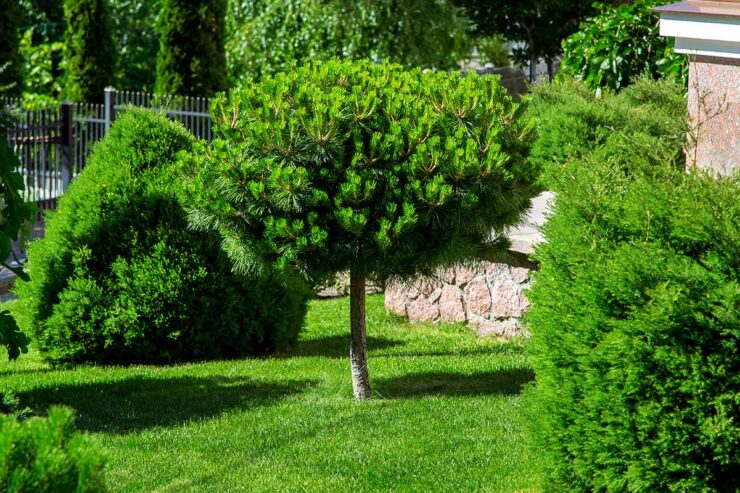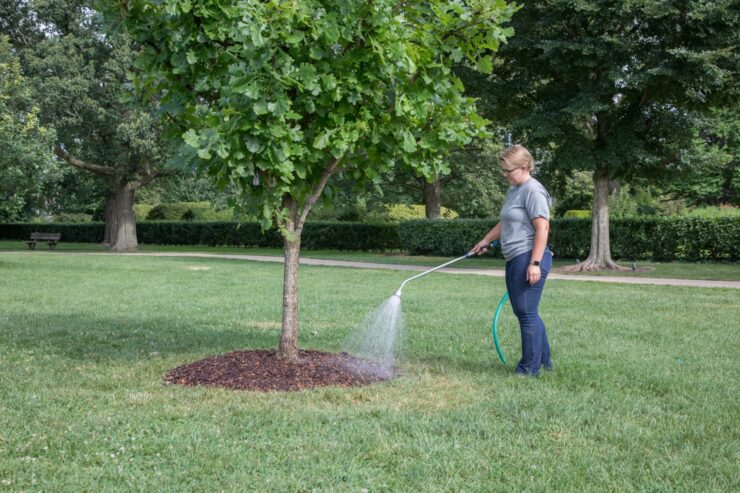Table of Contents
Imagine your yard lush with towering greenery, each plant casting soothing shade over a cozy garden bench. A scene like that isn’t just picturesque but can transform the environment around your home, offering privacy, cooling shade, and visual appeal year-round. With the right care, fast-growing plants can bring quick, rewarding transformations to any space. But how do you keep that growth steady and vibrant over time?
Let’s explore ways to support the health and longevity of your greenery while meeting practical landscaping needs.
Key Points:
- Choose quality varieties for durability and fast results.
- Prioritize proper planting for strong roots.
- Use pruning to control growth and boost health.
- Water strategically to encourage deep rooting.
- Fertilize and mulch for consistent nutrients and moisture.
Choosing the Right Varieties

The first step in nurturing long-lasting growth starts with selecting resilient, quick-growing varieties. Not all trees suit every climate, and choosing species compatible with your area’s conditions can prevent challenges later on. For affordable garden plants that adapt well to most environments, Tree Nursery offers a range of options that balance affordability with quality. Selecting suitable varieties creates a solid foundation, reducing issues tied to poor adaptability and speeding up the time it takes for the plant to mature.
Proper Planting for a Strong Foundation
When it comes to planting, depth and spacing matter. Planting too close or too shallow can strain roots, weakening their development. Dig holes two times the width of the root ball and about the same depth to encourage roots to spread. Avoid cramming multiple plants together, as overcrowding can limit root access to water and nutrients, slowing growth and weakening their structure. Give each plant enough room to mature without competing, ensuring long-term stability.
Pruning: A Path to Healthier Growth
Pruning holds significant benefits, acting as a tune-up that keeps growth balanced and healthy. Regular trimming, especially in the early years, shapes the plant and prevents uneven weight that can lead to breakage. It also removes weak or damaged branches, letting the plant focus its resources where they are needed. A proper annual pruning routine strengthens your landscape’s overall health, prevents pest infestations, and minimizes the risk of disease.
Watering Wisely

Effective watering reaches deep roots, reinforcing stability and resilience. Shallow watering leads to shallow roots, making them more vulnerable to dry spells. Water slowly and thoroughly, soaking the area around the base and ensuring it penetrates several inches down. Watering needs change through the seasons; during cooler months, less frequent but deep watering is best, while the warmer months might require more regular hydration. Knowing when to water makes a significant difference in maintaining their vitality.
Fertilizing for Steady Growth
Feeding is essential for growth, especially for fast-growing types that use nutrients quickly. Choose balanced, slow-release fertilizers that offer a steady nutrient supply, rather than a quick boost, which encourages more sustainable growth. Apply fertilizers during the active growing season, typically spring and early summer, to support their development. Avoid fertilizing late in the year to prevent a surge of tender new growth vulnerable to cold weather.
Mulching for Moisture and Protection
Mulching around the base creates a buffer against soil temperature changes and retains moisture. Organic mulch like wood chips or shredded bark works well, breaking down to add nutrients as it decomposes. Keep mulch away from the trunk itself to prevent rot, and refresh it yearly to maintain its benefits. Mulching helps control weeds, further supporting healthier growth by reducing competition for nutrients.
Protection Against Pests and Disease

Healthy plants naturally resist pests and disease better, but it’s essential to stay vigilant. Regularly inspect for signs of pests, such as discolored leaves, sticky residue, or visible insects. Look for any early signs of disease, like spots on leaves or unusual growth patterns. Addressing these issues promptly with organic insecticides or natural methods like neem oil can prevent more severe damage. Removing any diseased branches stops the spread and keeps the environment healthier.
Seasonal Care for Long-Term Success
Different seasons bring unique needs. In spring, focus on fertilizing and initial pruning to shape and strengthen. Summer requires regular checks for pests and consistent watering. Autumn is the time for mulching, ensuring roots stay insulated as temperatures drop. Winter, especially in colder regions, often calls for protective wraps around younger or delicate varieties to shield them from harsh conditions. Following seasonal routines keeps each tree resilient, regardless of weather changes.
Inspiring Landscapes: Creating Shade, Privacy, and Beauty
Fast-growing varieties like willows and cypresses are ideal for those looking for quick results in shading or privacy. Position plants strategically around outdoor seating, near windows, or along fences to create a natural screen that enhances privacy. For a balanced mix, consider planting a combination of evergreen and deciduous options. Evergreens provide coverage year-round, while deciduous types offer color changes in fall and delicate blooms in spring, making your landscape look fresh each season.
Simple Practices, Lasting Rewards

With a few consistent practices, maintaining your plants can become second nature, bringing out the full potential of your landscape. Each tree contributes its unique presence, offering shade, color, and structure. Whether you’re focused on immediate results with fast-growing types or prefer long-lived varieties, investing in care routines is worth the effort. By giving them attention, you can create a garden that rewards you for years.
FAQ Section
How often should I water newly planted varieties?
Water new plants deeply once a week, increasing to twice if the weather is hot or dry.
What’s the best time for pruning?
Prune in early spring before new growth starts or in late winter for most types, depending on the species.
How much mulch should I use?
A layer of 2–4 inches around the base works well, keeping it a few inches away from the trunk.
When should I fertilize?
Apply fertilizer in spring and early summer, avoiding late fall to prevent frost-sensitive growth.
Are fast-growing varieties weaker?
Not necessarily, but they may need more regular maintenance to manage size and support long-term strength.
By following these straightforward practices, you can enjoy a lush, green landscape that feels like a natural extension of your home.

